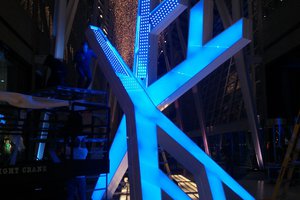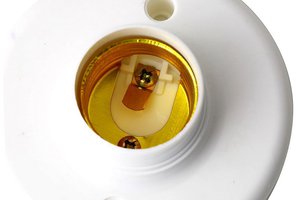Kitchen cabinet lighting on the cheap
Trying to light up the kitchen for less.
Trying to light up the kitchen for less.
To make the experience fit your profile, pick a username and tell us what interests you.
We found and based on your interests.
|
JPEG Image - 1.38 MB - 03/09/2020 at 21:38 |
|
|
|
JPEG Image - 1.31 MB - 03/09/2020 at 21:38 |
|
|
|
JPEG Image - 1023.95 kB - 03/09/2020 at 21:38 |
|
|
|
JPEG Image - 1.05 MB - 03/09/2020 at 21:38 |
|
|
The microswitches used turned out to be very sturdy, but there were three that could not be mounted at the back. One due to the fact that the drawer wouldn't allow it, and the other two were doors to hide a carrousel for pots, pans, and other items.
Unfortunately, our 2yo found these switches very interesting, and decided to break the lever, rendering the switch inoperable and the light permanently on. Now, I have enough microswitches to last me a lifetime, but having to solder a new one every other day get tedious.
So I set out for some optical switches, and found some on AliEx. Keyword is infrared switch, and they can be had for under $5 a piece, with 2510 connections or DC barrel jacks.
I'll probably equip the cupboards with these when my current to-do list is down from 40 items to 10. :)
Sooo... Where to begin this update... Yes, I'm still alive, and I finished the project not long after the last update. The system has been running for 3 years now, and it still works like a charm.
My wife wanted to know why I wanted to do this, but soon after the kitchen was ready, she told me that it was really something that she never knew she needed, until we had it. So I consider the whole endeavour a great success.
Things learned: it's proven to be very helpful to stick the double-sided tape to the aluminium srips and the LED strips and let them rest for a while so the glue can bond, before you put stress on the tape by hanging them upside down. The only strips that came off, were some of the strips which were directly stuck onto the underside of the countertop. You can use Polymax or JB Weld for those.
It's also not necessary to get yourself a power supply which can supply power to ever strip at the same time. The ANSLUTA PSU's were cheap (because of them going out of IKEA's programme, to be replaced by a dimmable version), but in the end a bit overkill. The positive side about that is that I don't have to worry about maxing the thing out EVER, and I'm confident that this supply will last longer than the kitchen itself.
Abviously, you don't HAVE to use IKEA supplies: any old 24v power brick will do, as long as you don't draw more power than the PSU can handle. The upside of the IKEA ones is that they are made with safety in mind, and can be connected in a very simple way, which is key if you want to build something that should be able to outlast your use of the product.
The LEDBERG strips are a bit chunky though. If I were to do this again, I'd source some decent LED strip with a good bit of double-sided tape, and make it all a bit more flat than the current strips already are. The OMLOPP lights are thicker, and while I understand why, I do think that IKEA may want to re-design the OMLOPP lights.
You see, there were a number of reasons I started this project. The cost was a big factor. Even now, with LED lighting cheaper than ever, the OMLOPP lights are still quite expensive, and when you take everything but time into account, my LEDBERG hack has cost me about one third of what OMLOPP would have cost me: 26 lights and 4-5 power supplies still set you back about €900.
Another factor is the amount of light coming off OMLOPP. Comparing the two, OMLOPP is definitely brighter than LEDBERG. However, LEDBERG's LED-chips are more evenly distributed, as where OMLOPP has 3 LED-chips grouped in one spot.
The 80cm version has four groups, the 60 and 40cm only have two. Not really a problem when you want to light up a large drawer, but a utensils-drawer is quite dark in the lanes which don't happen to have such a cluster.
So it would be good if IKEA would re-design the OMLOPP lights, to have more LEDs evenly distributed, and a lot more flat than what it is now. The magnets are a great help when fitting OMLOPP, but after that, they are useless. If they would leave those out, or put some smaller ones in, for instance...
Another tip I would like to give you: get enough LEDBERG to last you a while. One of the strips went missing, for some reason (glitch in the matrix, probably), and I used up my 24v LEDBERG stash on other projects, so I went and got a new set. They added some notches to the strips, and the thickness of the connector is different, meaning that the new strips fit the old connectors, but not the other way around. So in this case, it turned out fine, but if IKEA re-designs them again, one may not be so lucky.
So in the end, this labour of love has served us well, and we expect it to keep serving us well for years to come. I might replace the system at some point, but by making the power supply available behind each drawer, I'm flexible enough to switch to optical sensors if I feel it to be necessary. The switches are holding on, though, so I don't think that'll happen soon.
I managed to make some progress the past few days: 70% is done. There are three cabinets left that need to be fitted in part or entirely. Saved those for last, since these are already built for test fitting and need to be taken apart again.
In the mean time, I made good use of some of the strips that will be left after the drawers are fitted and put those on top of the top cabinets. Since those strips will be easily accessible after all is set and done, I soldered the wires directly to the strip connection. The result is 10W of LED strip, taking care of the ambient lighting.
In order to make sure the microswitches are mounted at the right spot, without having to mount the drawers first, I went to my local FabLab, and made good use of their laser cutter to make small acrylic plates with holes in the right place. This way, I can just mount the plate with one big screw (IKEA screw 100344, can be had for free at the Service Area of your local store) in one of the holes meant for mounting the rails for the drawers.
Next, I add two 5mm nylon spacers and put the microswitch on top of those, fastening the whole contraption with two 2.2mm * 25mm screws.
To mount the LED-strips, I need two tiny plates with holes in the right place, so I can mount them right beneath the rail for the drawer above. Still designing those, since my first attempt on making them left me with a pile of 4mm acrylic spacers with some very specific holes. ;)
The LED-strip for the top drawer will be stuck to the metal rail on top of the cabinet.
As this project picks up steam, new insights emerge. Since the useable width of the 80cm cabinets is actually 76cm, three strips of 25cm will not fit, lest we eschew the power connection, but that would render the strips useless, so we need even less strips!
I also had to figure out how to hook it all up and make it flexible, in order to switch to optics later on, in case the switches give out too soon. I'd rather go that route in the first place, but a lack of time made me put that idea on the back burner.
The first few cabinets have been fitted with wiring: I routed a slot on the side of the cabinet to guide the wires through, so that nothing is visible, apart from a short bit of wire to the strips. Everything is ultra low voltage and draws next to nothing, so there's no chance of heating up.
So, here we are. The IKEA OMLOPP-lighting system looks great and is tailored to IKEA's kitchen system. It's also quite expensive, with €25~€35 for each drawer, so I was set on making something myself.
I already gathered I would use a microswitch to detect an open drawer: those things are cheap, quite reliable and tiny. I also considered using reed switches, but those are quite hard to come by in a NC-configuration at a decent price level. Spending the same amount of money on one switch as the cost of one LEDBERG strip kit is kind of defeating the purpose of doing it on the cheap, so that was right out.
Getting rid of the wiring is a simple case of routing a small slot on the outside of the cabinet: those slots won't be visible once the kitchen is assembled, which makes for an aestehic finish.
Now to figure out how to mount the strips and the switches.
Create an account to leave a comment. Already have an account? Log In.
Become a member to follow this project and never miss any updates

 Nicholas Stedman
Nicholas Stedman
 Quinn
Quinn
 Enrico
Enrico
 matthewkleinmann
matthewkleinmann